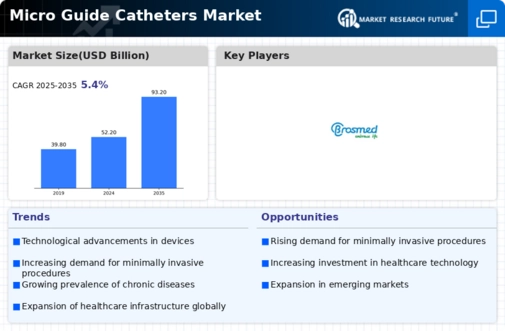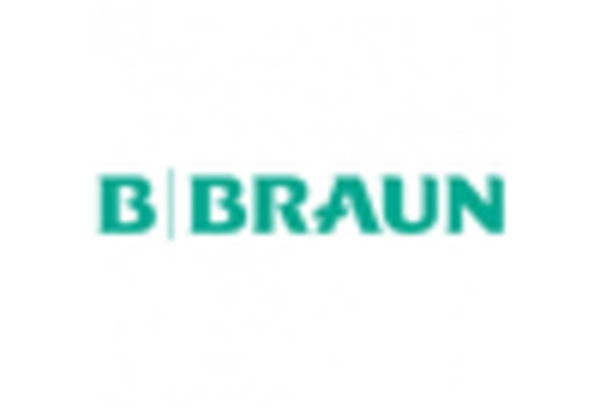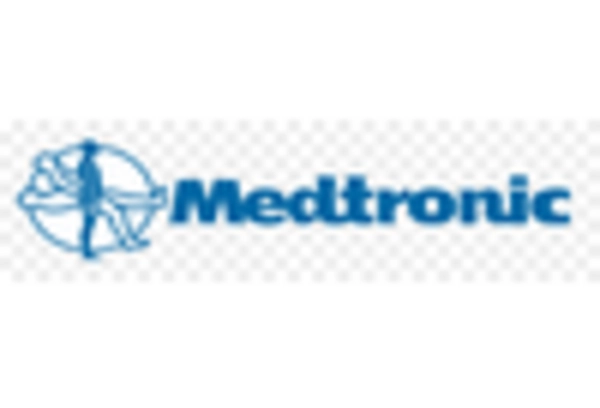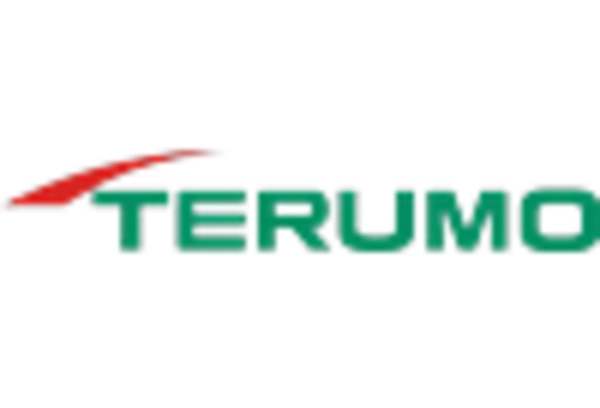Increased Focus on Patient Safety
The Micro Guide Catheters Market is increasingly influenced by a heightened focus on patient safety. Healthcare institutions are prioritizing the implementation of devices that minimize the risk of complications during procedures. This shift is reflected in the stringent regulatory standards that govern the design and manufacturing of medical devices, including micro guide catheters. Manufacturers are now compelled to invest in research and development to create safer, more reliable products. For instance, the incorporation of safety features such as anti-reflux mechanisms and improved tip designs can significantly reduce the likelihood of adverse events. Consequently, this emphasis on safety is likely to propel the growth of the micro guide catheters market, as healthcare providers seek to adopt devices that align with best practices in patient care.
Expansion of Interventional Radiology
The Micro Guide Catheters Market is benefiting from the expansion of interventional radiology as a specialty. This field is increasingly recognized for its ability to provide minimally invasive treatment options for a variety of conditions, including tumors and vascular malformations. The growth of interventional radiology is accompanied by a rising demand for specialized tools, such as micro guide catheters, which are essential for navigating complex anatomical structures. As more healthcare facilities invest in interventional radiology services, the need for advanced catheter technologies is likely to increase. This trend suggests a promising future for the micro guide catheters market, as practitioners seek to enhance their capabilities and improve patient care through innovative techniques.
Growing Prevalence of Cardiovascular Diseases
The Micro Guide Catheters Market is significantly impacted by the growing prevalence of cardiovascular diseases worldwide. As these conditions continue to rise, there is an increasing need for effective diagnostic and therapeutic interventions. Micro guide catheters play a crucial role in various cardiovascular procedures, including angioplasty and stent placement. Recent statistics indicate that cardiovascular diseases account for a substantial portion of global mortality, prompting healthcare systems to seek advanced solutions. The ability of micro guide catheters to facilitate access to coronary arteries and other critical areas makes them essential tools in the management of these diseases. Therefore, the escalating incidence of cardiovascular issues is expected to drive the demand for micro guide catheters, as healthcare providers aim to improve patient outcomes through innovative interventions.
Rising Demand for Minimally Invasive Procedures
The Micro Guide Catheters Market is witnessing a notable increase in the demand for minimally invasive procedures. This trend is largely driven by the growing preference among patients for treatments that involve less trauma, reduced recovery times, and lower risk of complications. According to recent data, minimally invasive techniques have been associated with shorter hospital stays and quicker return to normal activities, which appeals to both patients and healthcare providers. As a result, the market for micro guide catheters is expected to expand, as these devices are integral to performing such procedures. The ability of micro guide catheters to navigate complex anatomical structures with precision makes them indispensable in various applications, including interventional cardiology and neurology.
Technological Advancements in Micro Guide Catheters
The Micro Guide Catheters Market is experiencing a surge in technological advancements that enhance the efficacy and safety of catheter-based procedures. Innovations such as advanced materials and improved manufacturing techniques are leading to the development of catheters that are not only more flexible but also more durable. For instance, the introduction of hydrophilic coatings has been shown to reduce friction, thereby facilitating smoother navigation through vascular pathways. Furthermore, the integration of imaging technologies within catheters allows for real-time visualization, which is crucial for precision in complex procedures. As a result, these advancements are likely to drive the demand for micro guide catheters, as healthcare providers increasingly seek tools that improve patient outcomes and procedural efficiency.


















Leave a Comment